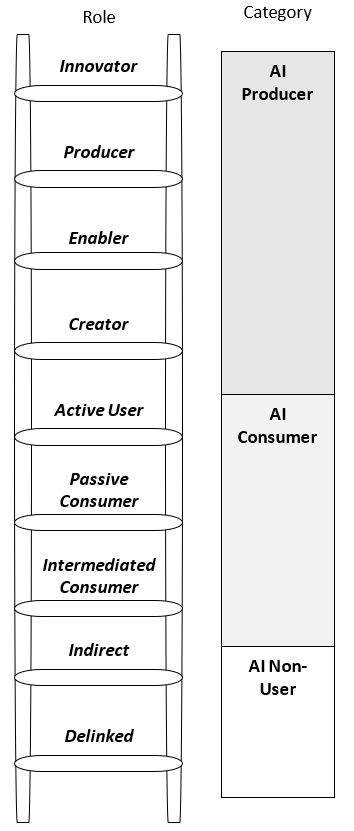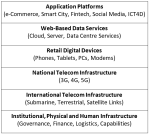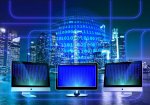 What is the status of AI rivalry between the United States and China?
What is the status of AI rivalry between the United States and China?
In recent years, the emergence of China as the world’s second digital superpower has led to talk of a “digital cold war”, with global competition between the US and China in fields such as telecommunications infrastructure, e-commerce and digital governance[i] and with China judged to be neck-and-neck with – if not ahead of – the US innovation frontier in a number of digital technologies including 5G, 6G, e-commerce, fintech and drones[ii].
The same terminology has also been used in the field of artificial intelligence to talk of an “AI cold war” between the two countries[iii]. Some, however, have questioned the reality of this particular cold war being fought by two global AI superpowers[iv]. In this post, therefore, I look at what the annual Government AI Readiness Index has to say about the idea that the US and China are two matched AI heavyweights.
The most recent Index, for 2023, shows limited sense of China being on an equal footing with the US in artificial intelligence[v], as summarised in the table below:
| 2023 Index | Overall Global Ranking | Global Ranking in AI-Related Government | Global Ranking in AI-Related Technology Sector | Global Ranking in AI-Related Data and Infrastructure |
| US | 1st | 4th | 1st | 2nd |
| China | 16th | 22nd | 10th | 29th |
Overall, the US ranks first in the world; a position it has held since the current form of the Government AI Readiness Index was created in 2020. China meanwhile is sandwiched between Estonia and Austria in 16th place.
The Index consists of the three pillars of AI readiness: government, technology sector, and data & infrastructure. Under each of these are three or four dimensions, such as digital capacity of government, or innovation capacity of the technology sector. And each dimension is created from a handful of indicators, such as UN e-government online services index score for digital capacity of government, or AI research papers score from Scimago for innovation capacity of the technology sector (though the measures of these indicators are only publicly available for 2023). Digging down into the data, one can tell a little more about China’s AI readiness.
While China makes its way into the world top 10 in terms of its AI technology sector, this rests on the maturity of the sector (ranked 3rd in the world behind the US and UK) while it is outside the top 30 in terms of human capital. Other individual areas of weakness where it lies outside the top 30 include data availability (ranking poorly in terms of open data and statistical capacity), data representativeness (due to relative absence of low-cost access to internet-enabled devices), governance and ethics (ranking relatively poorly on regulatory quality and very poorly on accountability), and adaptability (such as effectiveness and responsiveness of government). The US was ahead in all categories: most in tech sector maturity; least in digital capacity of government.
One can also investigate change over time, with the position in 2020 shown in the table below:
| 2020 Index | Overall Global Ranking | Global Ranking in AI-Related Government | Global Ranking in AI-Related Technology Sector | Global Ranking in AI-Related Data and Infrastructure |
| US | 1st | 2nd | 1st | 7th |
| China | 19th | 14th | 11th | 52nd |
Overall, China has progressed from 19th in the global ranking in 2020 to 16th position in 2023. Because of changes to the constituent components in a few measures, analysing change over time is far from an exact science but, between 2020 and 2023, China made most progress in three areas: data representativeness, innovation capacity and infrastructure. But it fell back particularly in governance and ethics and to a smaller degree in human capital. Relative to the US, China gained ground most in data & infrastructure across all dimensions: infrastructure, data availability and data representativeness. And it slipped back most in governance and ethics, and next most in terms of technology sector maturity[vi].
All of this must be taken with a pinch of salt. Indexes have to be comprised of the measures that are available rather than of those one would want: of the 39 indicators making up the index, only three are explicitly about AI. In these in 2023 – AI strategy, number of AI unicorns, and AI research papers – China is respectively equal to the US[vii], 2nd globally to the US 1st position, and 1st globally compared to the US in 3rd place[viii]. China has also been investing very heavily in AI both financially and institutionally, spurred on by initiatives such as the 2017 New Generation Artificial Intelligence Development Plan and the prominence of AI in the 2021 Fourteenth Five-Year Development Plan[ix].
Nor do any of the Government AI Readiness Index rankings or measures deny the frictions between the US and China in this domain where, “in the growing geopolitical tensions between the United States and China, AI has emerged as the new frontier of their rivalry”[x]. However, the Index authors make the argument that, overall, the Index’s constituent measures represent the broad foundations required for AI success, and their work thus provides at least some support for the notion that this has not yet become a rivalry between AI superpower equals.
Follow @CDDManchesterImage Source: Vecteezy
[i] Heeks, R., Ospina, A.V., Foster, C., Gao, P., Han, X., Jepson, N., Schindler, S. & Zhou, Q. (2024) China’s digital expansion in the Global South: Systematic literature review and future research agenda, The Information Society, 40(2), 69-95
[ii] The Economist (2024) How Xi Jinping plans to overtake America, The Economist, 31 Mar
[iii] Thompson, N. & Bremmer, I, (2018) The AI cold war that threatens us all, Wired, 23 Oct
[iv] Bryson, J. J., & Malikova, H. (2021). Is there an AI cold war?. Global Perspectives, 2(1), 24803
[v] Oxford Insights (2024) Government AI Readiness Index 2023, Oxford Insights, Oxford, UK
[vi] As another indicator of this, in 2022 there were 542 newly-funded AI companies in the US compared to 160 in China: HAI (2023) Artificial Intelligence Index Report 2023, Human-Artificial Intelligence, Stanford University, Stanford, CA
[vii] Though equal also with several other countries as the only scores available in the category were 0, 50 or 100
[viii] India ranked 2nd globally
[ix] Though with a history of activity on AI stretching back to the 1980s: Zhou, L. (2023) A historical overview of artificial intelligence in China, Science Insights, 42(6), 969-973.
[x] Zhang, H. & Khanal, S. (2024) To win the Great AI Race, China turns to Southeast Asia, Asia Policy, 19(1), 21-34

 What issues should shape organisational digital-transformation-for-development (DX4D) strategy?
What issues should shape organisational digital-transformation-for-development (DX4D) strategy? What are the implications for the global South of China’s emergence as a digital superpower?
What are the implications for the global South of China’s emergence as a digital superpower?
 What role can pragmatism play in development studies research?
What role can pragmatism play in development studies research?

 Recent outputs – on Digital economy; Digital labour; Digital transformation; Data-for-development – from
Recent outputs – on Digital economy; Digital labour; Digital transformation; Data-for-development – from  What can digital-transformation-for-development (DX4D) learn from transformation studies?
What can digital-transformation-for-development (DX4D) learn from transformation studies?
 How is transformation understood in international development, and what are the implications for digital-transformation-for-development (DX4D)?
How is transformation understood in international development, and what are the implications for digital-transformation-for-development (DX4D)?